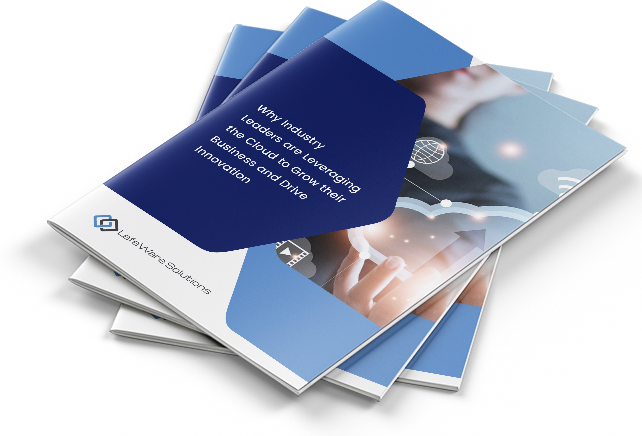In this post we’re exploring Microsoft’s newest flagship data analytics platform, Microsoft Fabric. Fabric is described as a major leap in data analytics and poised to reshape the world of AI and analytics.
If you prefer video format, please watch the video below and be sure to subscribe!
What is Microsoft Fabric?
Earlier this year at Build 2023 Satya Nadella stated that “Microsoft Fabric is the most significant launch in data products from Microsoft since SQL Server”, which I don’t know about you, but that should immediately catch your attention!
So, what exactly is Microsoft Fabric?
It’s an end-to-end analytics platform that brings together a diverse range of technologies and many different personas that might be working with data within an enterprise organization under a single unified solution. Fabric combines Microsoft Power BI, Azure Data Lake, Azure Synapse Analytics, and Azure Data Factory into a single SaaS platform.
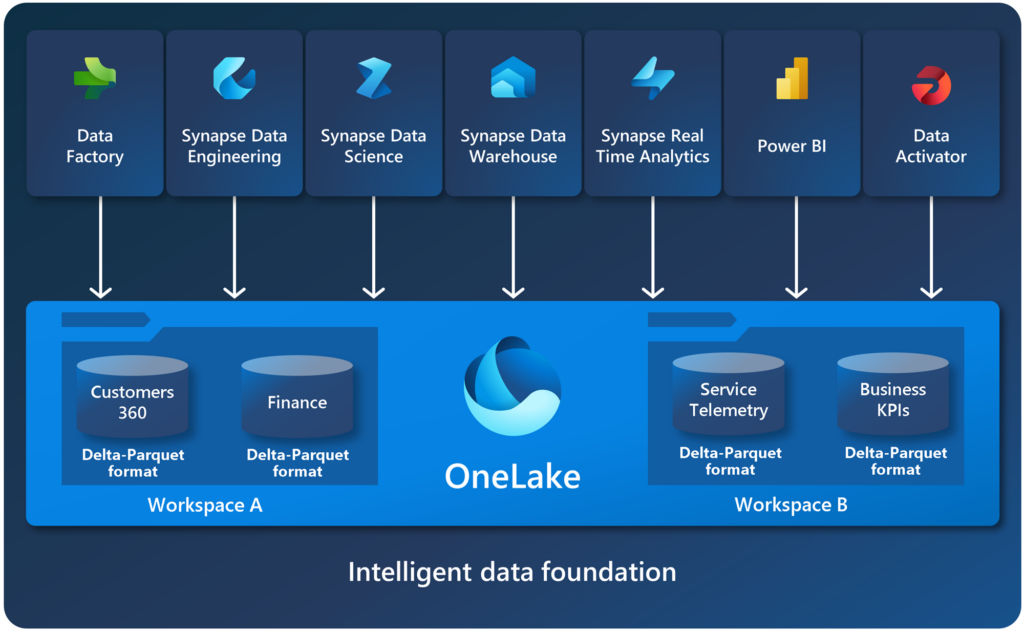
Now Microsoft is claiming that it is not a direct replacement for the above Microsoft services, but rather a “significant evolution and unification of these services”. However, after some exciting announcements at Ignite this year it’s hard to believe that Fabric won’t eventually become the de facto analytics platform for large enterprise clients provided that they can maintain a reasonable price point.
What Challenges does Fabric Hope to Solve ?
Microsoft created Fabric to address several challenges in the field of data analytics and management, particularly in this new AI-driven landscape. Below we’ve broken them down into five different categories based on the problems Fabric is trying to solve
1. Unified Data Management through OneLake
First up is unified and simplified data management. This is a problem we run into a lot with our clients at LefeWare Solutions, where each team will have their own way of collecting , governing and securing data resulting in “Data Silos”.
Microsoft Fabric aims to enhance the complex task of data management by introducing OneLake, a unified storage layer that organizes all data into a logical structure. OneLake is essentially just an abstraction layer over an Azure data lake that further simplifies data handling across various sources.
The OneLake approach aims to simplify enterprise data management with better governance control, more granular access controls via a user-friendly data hub. This innovation allows users in an organization to manage their data with greater effectiveness and efficiency, thereby enhancing overall data governance and accessibility.
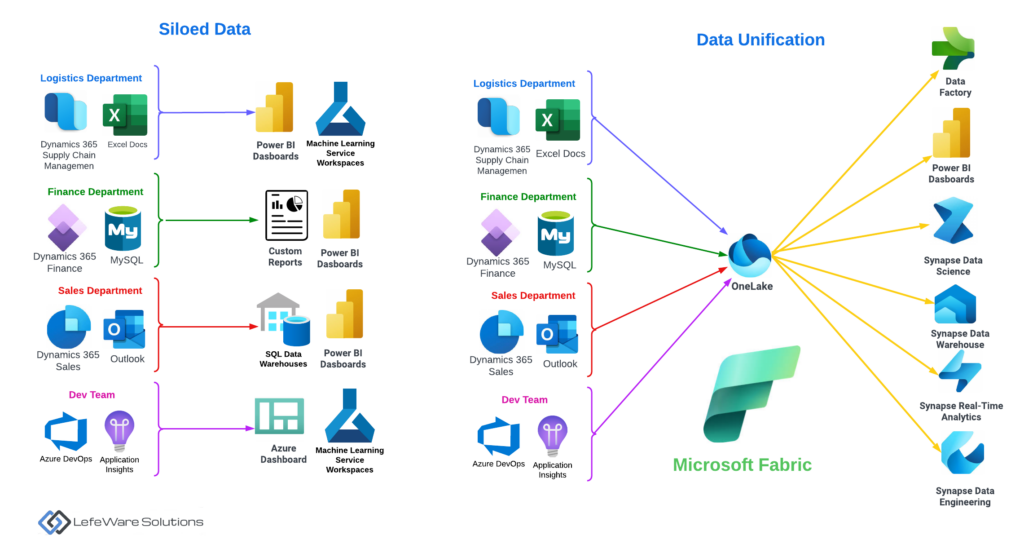
2. Enhanced Analytics and Machine Learning Capabilities:
Fabric also aims to enhance analytics and machine learning capabilities for organizations
Now obviously Microsoft already has Azure Synapse and Azure Machine Learning Studio in place which are great PaaS based platforms for creating models and generating analytics to derive insights. However, Microsoft claims that these Fabric synapse solutions bring improved speed, scalability, and new capabilities to the table. They have personas tailored for specific tasks that each merit an entire post on their own:
The Synapse Data Engineering experience abstracts the underlying Apache Spark clusters to allow data engineers to transform and prepare organizational data to share with the business
The Synapse Data Science experience allows organizations to build machine learning models and infuse predictive insights into your analytics solutions and applications.
The Synapse Real-Time Analytics experience allows organizations to rapidly ingest, transform and observe data in real time as it is collected from various sources such as apps and IoT devices.
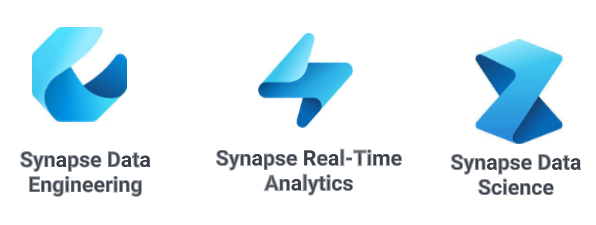
3. Next-Generation Data Warehousing
Fabric also introduces it’s own built in Data Warehouse known as Synapse Data Warehouse.
Synapse Data Warehouse is an enterprise relational data warehouse that aims to improves enterprise data storage, data management, data analysis and is designed to handle large data sets with remarkable efficiency. Fabric’s goal with Synapse Data is ultimately around driving better business outcomes through improved data strategies.
The Synapse Data Warehouse stands out because it’s built on top of Fabric’s Lakehouse, where data is stored in Delta format and can be queried using SQL.
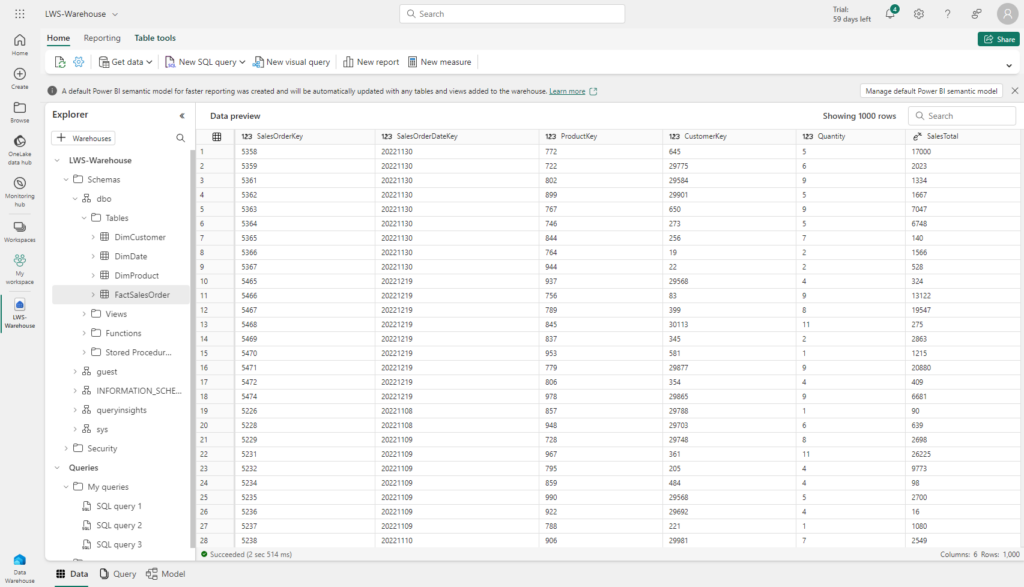
4. Better Integration between different Systems
For those who’ve worked with Azure Data Factory, the data pipelines in Microsoft Fabric Data Factory will seem quite familiar.
Fabric Data Factory is designed to move and transform large volumes of data from one source (e.g. an ERP system, CRMS or even a transactional database) into a different data store, usually where large scale analysis can be performed (e.g a data warehouse).
Its primary value lies in enabling efficient ETL (Extract, Transform, Load) processes, integrating different organizational data sources, and automating complex data workflows. This capability of moving and transforming data is crucial for organizations looking to optimize their data management, enhance their analytical capabilities, and drive more informed decision-making at large scale by leveraging comprehensive and integrated data insights.
Data Factory offers a drag and drop user interface supplying various linked activities to outline a workflow, encompassing various data processing tasks and control flow mechanisms. These pipelines can be executed on-demand through the Microsoft Fabric interface or set up to operate automatically according to a schedule.
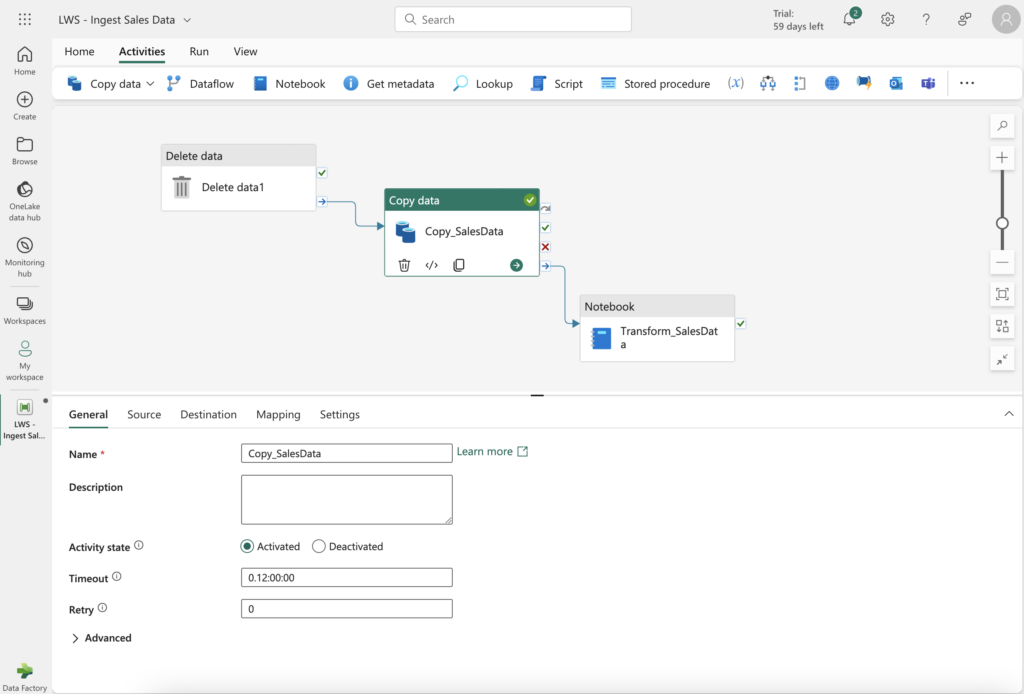
5. Rich Visualizations
Finally we have PowerBI, the world’s leading Business Intelligence platform used for creating stunning dashboard visualizations.
While at first glance, PowerBI might appear similar to its existing form, its integration into the Fabric stack allows easy and simplified access to all an organization’s within Fabric. Through this seamless integration, we end up with the insights we need for better decision-making capabilities via the Fabric ecosystem, leading to smarter, more informed business strategies
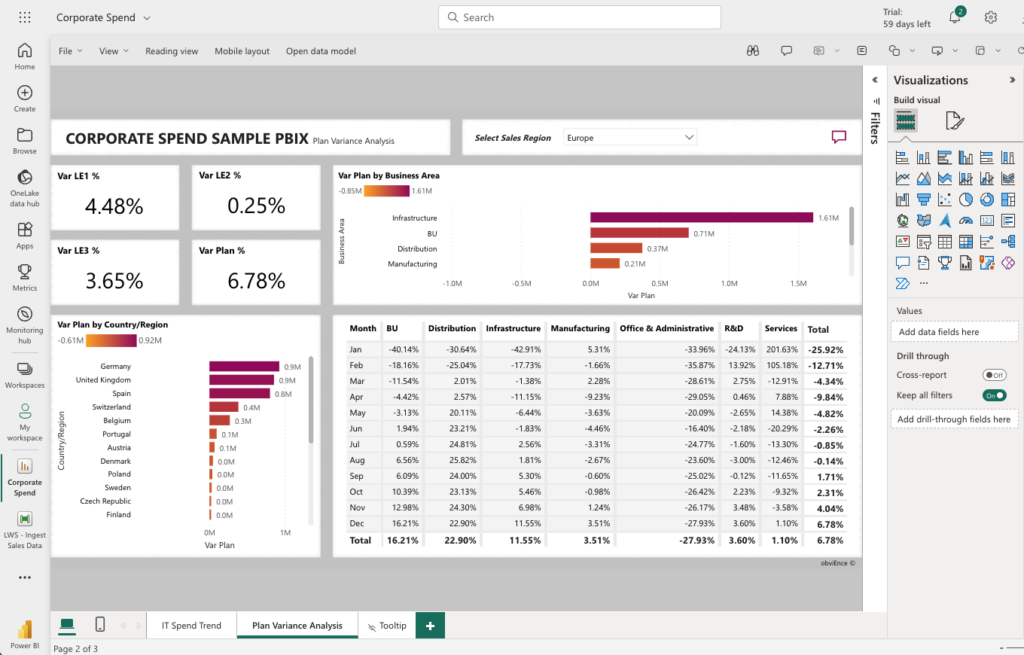
New Features Announced at Ignite
Fabric became generally available as of November 15th and its clear from the hype that this product is going to be juggernaut within enterprise organizations. Along with the GA release there were several other key announcements made at Microsoft’s Ignite event that only solidified this point:
- The public preview of Copilot in Microsoft Fabric, which will allow using natural language to create dataflows and pipelines, write SQL statements, build reports, or even develop machine learning models
- Integration with Microsoft Purview into Fabric to provide enterprise scale security, compliance and governance capabilities that enterprises use today for Office, Microsoft 365, Azure and multi-cloud platforms.
Conclusion
At LefeWare Solutions, we have worked extensively with Microsoft technologies like Azure Synapse, Azure Data Factory, Data Lake, and PowerBI and understand the paint points around these platforms quite well. We believe that the Fabric experience of a unified platform, consolidating these technologies under one name, is a step in the right direction. However, this unification goes beyond just another Microsoft marketing tactic; it is the user-friendliness and seamless integration of these diverse technologies that we believe will drive the adoption of this new platform.
Increasingly, our clients at LefeWare Solutions are shifting their data strategies. We’ve been noticing a steady move away from traditional Infrastructure as a Service (IaaS) and Platform as a Service (PaaS) models towards more user-friendly Software as a Service (SaaS) platforms.
We’re thrilled to include this new platform in our toolkit at LefeWare Solutions. If your company is looking to set up its Fabric, don’t hesitate to contact us. We’re ready to guide you through the entire process!




